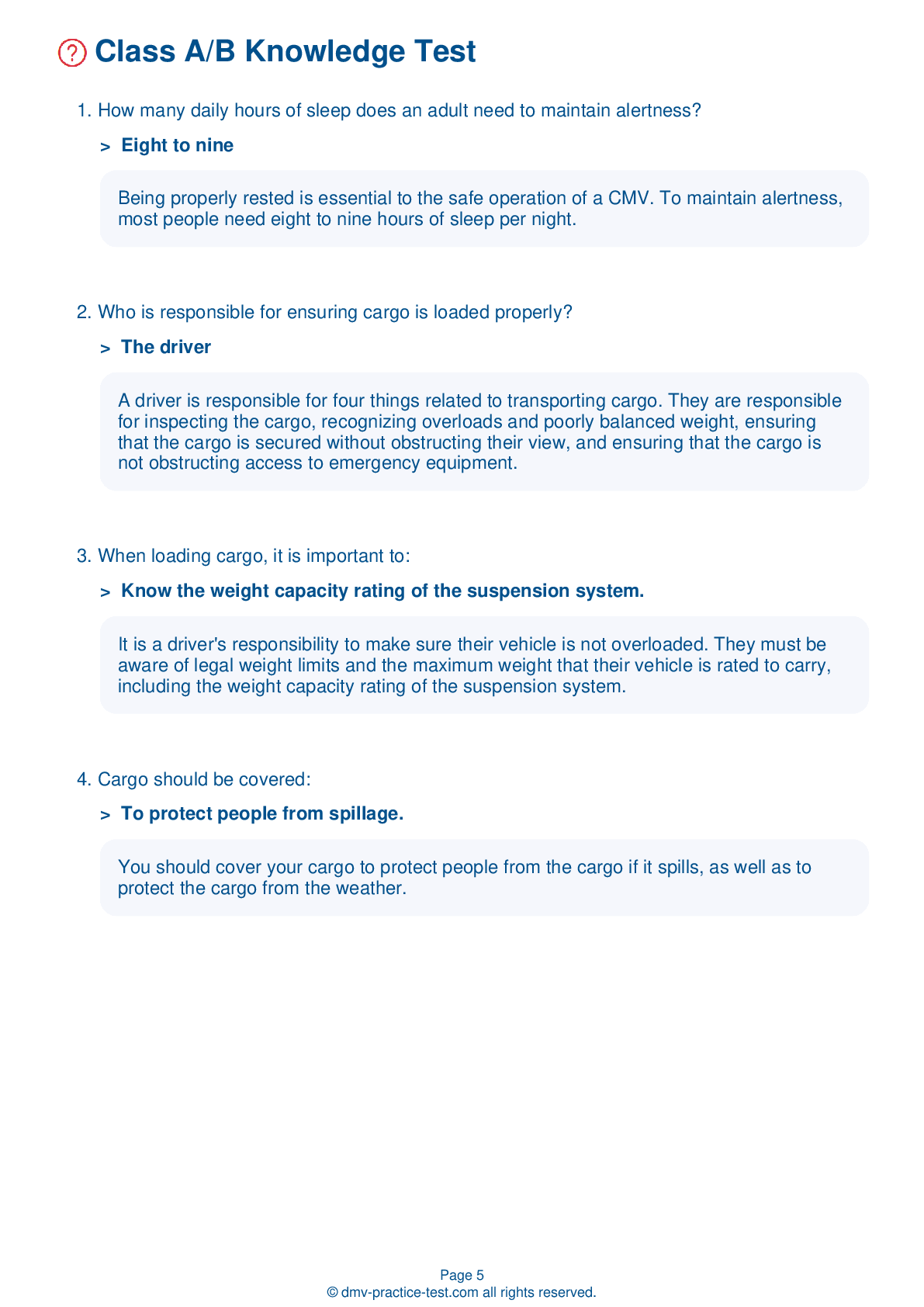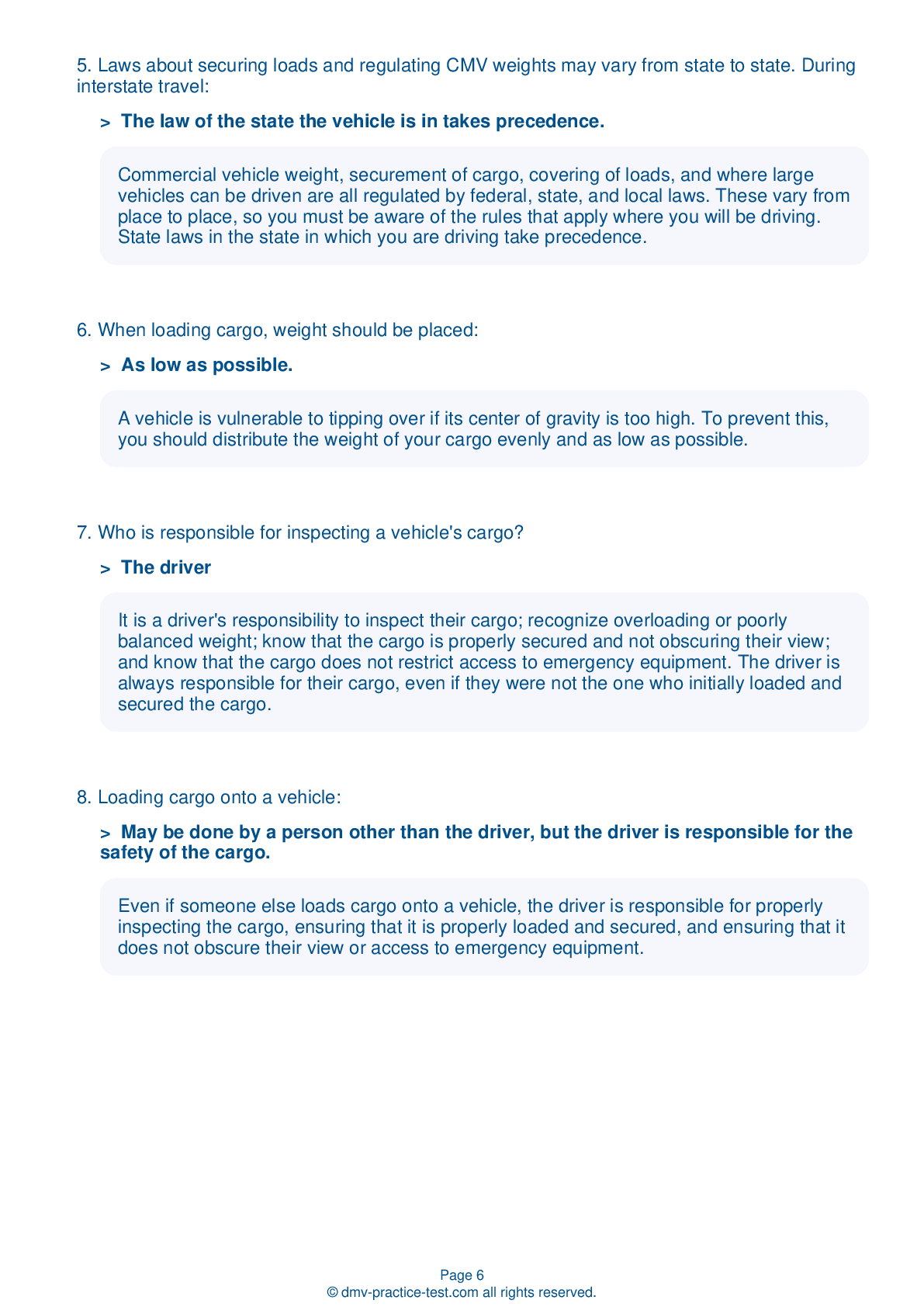Passenger Endorsement | Connecticut 2026 #1 Page 3 of 3
Train for FREE with our Connecticut CDL passenger endorsement practice test online. The official exam test consists of several obligatory parts, with all of them checking your knowledge of different blocks of road rules. If you need to obtain a CT DMV passenger endorsement in 2026, practice as much as possible. Free sample tests published on our website will help you check and improve your knowledge and boost your grades. Please bear in mind that DMV requirements for issuing a CDL permit with passenger endorsement may vary from state to state.
15 . Emergency roof hatches on a bus:
On a bus, it is permissible to lock some emergency roof hatches in an open position to allow in fresh air. However, this should not be a regular practice.
16 . Shortly after a tire has been changed, you should:
After a tire has been changed, you should stop a short while later to recheck the tightness of the lug nuts.
17 . The tire load for a tire is stated:
The tire load, or the maximum safe weight that a tire can carry at a given pressure, is stated on the side of each tire.
18 . After an accident, flares should be used with caution because:
After an accident, spilled fuel and improper use of flares can result in a fire.
19 . If a vehicle has a vehicle inspection report, the driver:
For the first step of a vehicle inspection, you should review the last inspection report on your vehicle, if there is one. The carrier should have repaired any problems noted on the report.
20 . Skids caused by acceleration can usually be resolved by:
Skids caused by acceleration frequently occur on slippery road surfaces. These skids can generally be resolved by the driver removing their foot from the accelerator.
See the exact questions that will be on the 2026 Connecticut DMV exam.
99.2% of people who use the cheat sheet pass the FIRST TIME
Lillian MCcranie explains how our CDL study guide was helpful in passing the exam and recommends it to everyone.
Cameron tells us how he purchased the CDL exam, and found it to be a useful tool which helped him pass the exam and find a job.



